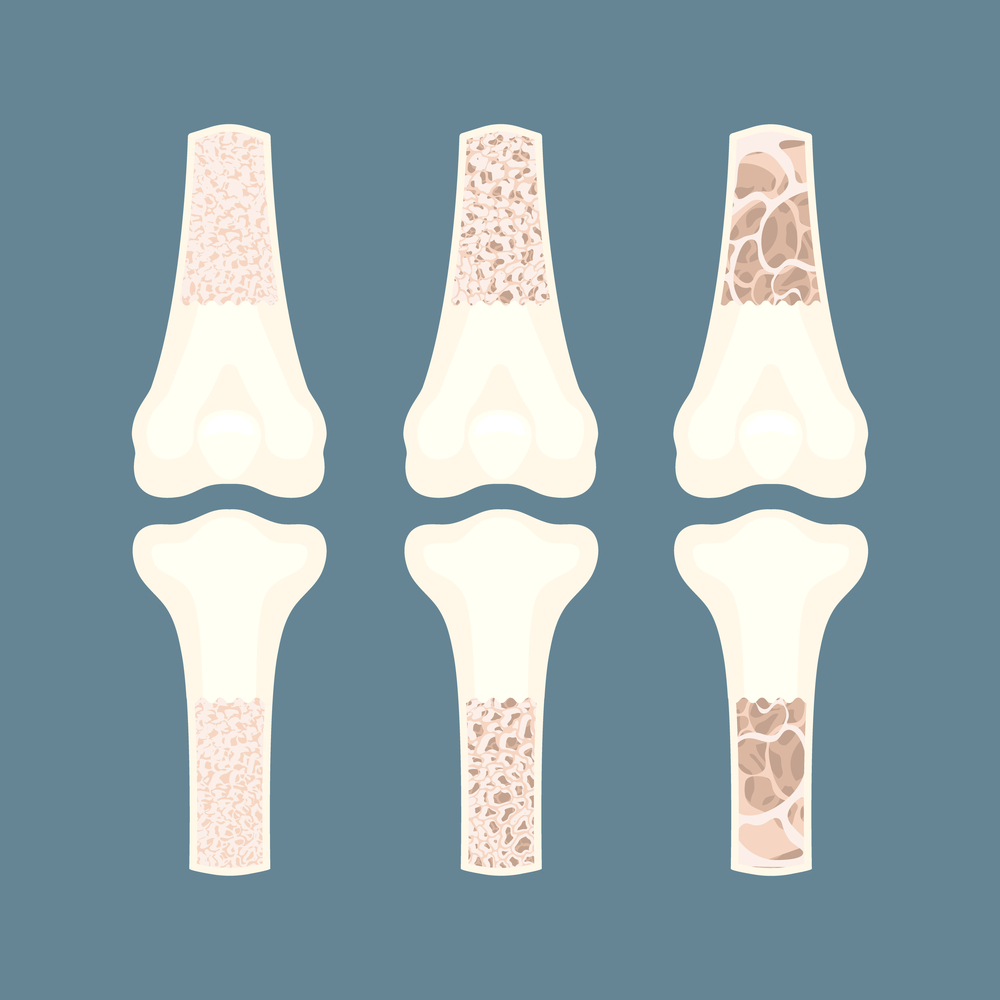
Written by Dr. Arlette Pacheco.
Uterine fibroids are a common health concern that many women face during their reproductive years. Despite their prevalence, there’s still a lot of misinformation surrounding these non-cancerous growths. Whether you’re experiencing symptoms or want to be informed, understanding uterine fibroids is crucial for every woman. This guide will break down what fibroids are and how they can impact your health. Let’s dive into what every woman should know about uterine fibroids.
A Deep Dive into Uterine Fibroids
Uterine fibroids are benign growths that form in or on the uterus. These benign tumors, also known as leiomyomas or myomas, can vary in size (Barjon K, 2024). They can be tiny seedlings to bulky masses that can distort and enlarge the uterus (Peddada et al., 2008). Although the word “tumor” might sound alarming, fibroids are not cancerous and rarely develop into cancer.
If you suspect you have fibroids, it’s essential to consult a fibroids specialist. They can diagnose the condition through a pelvic exam, ultrasound, or other imaging tests. Early detection and intervention can significantly prevent potential complications.
Types of Uterine Fibroids
Fibroids are categorized according to their position within the uterus (Bulun, 2013). The main types include:
1) Intramural Fibroids. Located within the uterine muscle wall.
2) Subserosal Fibroids. Found on the outer surface of the uterus.
3) Submucosal Fibroids. Protrude into the uterine cavity.
4) Pedunculated Fibroids. Connected to the uterus by a slender stem.
How Common Are Uterine Fibroids?
Uterine fibroids are incredibly common, especially among women of reproductive age (Stewart et al., 2017). It is estimated that by the age of 50, between 70% and 80% of women will likely develop fibroids. Despite their widespread occurrence, many women may not even realize they have fibroids. These growths can often be asymptomatic (Divakar, 2008).
Statistics and Demographics
The prevalence of uterine fibroids varies significantly across different demographic groups. Research shows that fibroids are more common in certain populations, particularly among African American women (Faerstein et al., 2001). In fact, African American women are two to three times more likely to develop fibroids than white women. They also tend to develop fibroids earlier in life and may experience more intense symptoms.
Risk Factors for Developing Fibroids
Any woman of reproductive age may develop fibroids. However, certain risk factors increase the likelihood (Dragomir et al., 2010):
1) Age. Fibroids are most commonly diagnosed at the ages of 30 to 40. The risk increases with age until menopause when fibroids typically shrink due to lower hormone levels.
2) Family History. If your mother had fibroids, your chances of developing them are significantly higher. Genetics plays a crucial role in fibroid development.
3) Ethnicity. African American women are at an increased risk of developing fibroids and often do so at younger ages.
4) Hormonal Factors. High levels of estrogen and progesterone seem to promote the growth of fibroids. These hormones play a significant role in fibroid development.
5) Obesity. Women who are overweight or obese face a higher risk of developing fibroids. This is likely because body fat increases estrogen levels, which can encourage fibroid growth.
6) Diet. Diets rich in red meat and poor in green vegetables and fruit may increase the risk of fibroids.
7) Lifestyle Factors. Vitamin D deficiency and alcohol consumption may also contribute to the risk of fibroids. However, more research is needed to confirm these links.
Impact on Women’s Health
Uterine fibroids can impact on a woman’s health. The severity of this impact varies widely depending on the fibroids’ size, number, and location. Some women may experience only mild discomfort, while others may face significant challenges that interfere with their daily lives.
Physical Symptoms
The physical symptoms of uterine fibroids depend on the fibroids’ size and location. Common symptoms include:
1) Heavy Menstrual Bleeding. One of the most common symptoms of fibroids is menorrhagia, or heavy and prolonged menstrual bleeding (Puri et al., 2014). This can lead to anemia, causing fatigue, weakness, and pale skin. In some cases, the bleeding may be severe enough to require medical intervention.
2) Pelvic Pain and Pressure. Large fibroids can cause a sensation of fullness or pressure in the lower abdomen (Stewart, 2001). This pressure can lead to chronic pelvic pain, discomfort during intercourse, and pain in the lower back.
3) Frequent Urination. When fibroids press against the bladder, they can cause frequent urination or difficulty emptying it completely (Bochenska et al., 2021). This symptom can be particularly disruptive to daily life and sleep.
4) Constipation and bloating. Fibroids that press on the rectum can cause constipation, bloating, and discomfort (Stewart, 2001). These gastrointestinal symptoms are often mistaken for other digestive disorders, leading to misdiagnosis.
5) Complications during pregnancy. Fibroids can complicate pregnancy by increasing the risk of miscarriage, preterm birth, and abnormal fetal position (Freytag et al., 2021). Women with fibroids are also more likely to require a cesarean section.
Emotional and Psychological Impact
The emotional toll of living with fibroids is often overlooked. Yet, it is an important aspect of the overall impact on women’s health. The chronic pain and discomfort associated with fibroids can lead to (Chiuve et al., 2022):
– Anxiety
– Depression
– Decreased quality of life
Women may feel frustrated by the unpredictability of their symptoms, particularly heavy menstrual bleeding. This symptom can interfere with work, social activities, and relationships.
Fertility and Reproductive Health
Many women with fibroids can conceive and carry a pregnancy to term without issues. However, others may face challenges. The location of fibroids plays a crucial role in determining their effect on fertility:
1) Submucosal Fibroids. They are most likely to cause fertility problems, as they can interfere with the implantation of the embryo (Pritts et al., 2009). This type of fibroid increases the risk of miscarriage.
2) Intramural Fibroids. These fibroids can also impact fertility, particularly if they are large enough to distort the uterine cavity (Somigliana et al., 2021). They may also block the fallopian tubes, further affecting a woman’s ability to conceive.
3) Subserosal Fibroids. They are less likely to affect fertility but can still cause discomfort and complications during pregnancy (Pritts et al., 2009).
For women undergoing fertility treatments, the presence of fibroids can reduce the success rates. In some cases, surgical removal of fibroids may improve the chances of conception.
Long-Term Health Risks
While fibroids are benign and non-cancerous, they can still pose long-term health risks if left untreated. This is especially true when symptoms are severe. Chronic heavy bleeding can lead to iron deficiency anemia (Uimari et al., 2022), which, if not managed, can cause heart problems. Also, the presence of large or multiple fibroids can increase the risk of developing other conditions, such as endometrial hyperplasia (Singh et al., 2024). This condition is an abnormal thickening of the uterine lining that can rarely lead to cancer.
Furthermore, the chronic pain and pressure caused by fibroids can lead to other health complications, such as:
– Urinary tract infections (UTIs) due to bladder compression (Parker-Autry et al., 2011)
– Bowel obstructions caused by fibroid pressure on the intestines (Farooq et al., 2023)
Impact on Sexual Health
Fibroids can also affect a woman’s sexual health and intimacy. Pain during intercourse (dyspareunia) is a common symptom (Moshesh et al., 2014), particularly when fibroids are located near the cervix or within the uterine cavity. This pain can make sexual activity uncomfortable or even unbearable, leading to a decrease in sexual desire and intimacy issues within relationships.
The psychological impact of fibroids can also contribute to sexual health problems. Women who are dealing with the emotional stress and anxiety of living with fibroids (Chiuve et al., 2022) may find it difficult to engage in sexual activities. This can further strain their relationships and impact their overall well-being.
Treatment Options
When it comes to treating uterine fibroids, there’s no one-size-fits-all approach. The best treatment plan depends on factors such as (Sefah et al., 2023):
– The size, location, and number of fibroids
– The severity of symptoms
– The woman’s age
Medications
Some medications can manage the symptoms of fibroids. However, they do not eliminate the fibroids themselves. These treatments are typically used to control heavy bleeding and reduce pain. Some of the medications include:
1) Hormonal Treatments. Birth control pills or intrauterine devices that release progestin can help control heavy menstrual bleeding (Kashani et al., 2016). Gonadotropin-releasing hormone (GnRH) agonists are another option. They temporarily induce a menopausal state by lowering estrogen levels, which can shrink fibroids and reduce symptoms.
2) Non-Hormonal Medications. Nonsteroidal anti-inflammatory drugs (NSAIDs) like ibuprofen can help manage pain. However, they do not affect bleeding or fibroid growth. Tranexamic acid is another non-hormonal option used to reduce heavy menstrual bleeding (Peitsidis & Koukoulomati, 2014).
3) Iron Supplements. For women with anemia from heavy bleeding, iron supplements are often prescribed to restore healthy levels.
Minimally Invasive Procedures
These procedures are ideal for women seeking to preserve their uterus and fertility or who prefer a less invasive approach. These treatments aim to reduce or eliminate fibroids while minimizing recovery time and risks.
1) Uterine Fibroid Embolization (UFE). In this technique, small particles are injected into the arteries that provide blood to the fibroids. By blocking these blood vessels, the fibroids shrink, and symptoms improve. UFE is effective in reducing symptoms in most women and has a shorter recovery time compared to surgery (Spies, 2013).
2) Radiofrequency Ablation. This procedure employs radiofrequency energy to heat and eradicate fibroid tissue. It can be performed laparoscopically or transcervically, depending on the location of the fibroids. Radiofrequency ablation is still relatively new, but it may be an effective and less invasive alternative to myomectomy (Lee & Yu, 2016).
3) Myolysis. Myolysis involves using an electric current, laser, or freezing technique to destroy fibroids and cut off their blood supply (Zupi et al., 2006). This procedure is usually performed laparoscopically, meaning small incisions are made in the abdomen, and a camera is used to carry out the procedure.
Surgical Options
For women with large, symptomatic fibroids or those who haven’t found relief from other treatments, surgery may be the best option. Surgical treatments include:
1) Myomectomy. This surgical procedure removes fibroids while preserving the uterus (Levy, 2008). It’s the preferred option for women who wish to maintain fertility.
2) Hysterectomy. The removal of the uterus is the only definitive cure for fibroids (Seffah & Adanu, 2006). It’s typically recommended for women with severe symptoms who do not wish to have children in the future. While a hysterectomy eliminates fibroid-related symptoms, it is a major surgery with a significant recovery period and permanent loss of fertility.
Alternative and Complementary Therapies
Some women seek alternative therapies to manage fibroid symptoms. While these therapies may not cure fibroids, they can help alleviate symptoms. Alternative therapies include the following:
1) Dietary Changes. A diet abundant in whole grains and vegetables may help reduce the risk of fibroids symptoms (Tinelli et al., 2021). Some women find that reducing red meat and avoiding processed foods and alcohol can also be beneficial. Incorporating foods high in antioxidants and anti-inflammatory properties, such as berries, may support reproductive health.
2) Herbal Remedies. Certain herbs, such as vitex (chasteberry) and dandelion, support hormonal balance and liver health. These herbs may indirectly benefit women with fibroids (van Die et al., 2013). However, it’s important to consult with a doctor before using herbal remedies. They can interact with other medications and might not be safe for all people.
3) Acupuncture. This traditional Chinese medicine practice is used to relieve pain associated with fibroids. While scientific evidence on its effectiveness for fibroids is limited (Liu et al., 2019), acupuncture may help improve quality of life. It can address symptoms such as pelvic pain and heavy bleeding.
Conclusion
Understanding uterine fibroids is crucial for every woman, whether you’re experiencing symptoms or simply want to be informed. While fibroids are common and often benign, their impact on your health and quality of life can be significant. The good news is that there are numerous treatment options available. Remember, knowledge is power, and being informed about your options is the first step toward taking control of your health.
Short biography
Arlette Pacheco is a content writer who pursued a passion for Biology, earning a Ph.D. in Life Sciences. She discovered her love for writing, crafting scientific and divulgation articles, bridging the gap between science and society.
Please also review AIHCP’s Nurse Patient Educator Certification programs and see if it meets your academic and professional goals. These programs are online and independent study and open to qualified professionals seeking a four year certification



